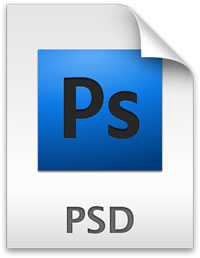Difference between GIF and PSD
Key difference: GIF stands for Graphics Interchange Format. The filename used for a GIF file is .gif or .GIF. GIF is a format mainly used for graphic images. PSD, on the other hand, is the default file extension for Photoshop files.

The most commonly used images are raster images, or rather bitmap images. The The term bitmap essentially means a map of bits or specifically a ‘spatially mapped array of bits’. The term bitmap is rooted in computer programming terminology. A bitmap images uses different colored pixels, which are arranged in a manner to display an image. Most common images today are generated by a layout of pixels. Examples of bitmap images include .psd, .jpg, .gif, .tif, or .bmp.
GIF stands for Graphics Interchange Format. The filename used for a GIF file is .gif or .GIF. GIF is a format mainly used for graphic images. The GIF was first introduced in 1987 and is still one of the popularly used formats on webpages. However, its popularity has been decreasing lately, especially after the introduction of PNG. PNG aimed to be an improvement over GIF and hoped to address the limitations of the older format. Nonetheless, PNG has not been able to usurp GIF’s position in animation, as PNG like most other formats, including JPEG, does not support animation.
GIF, on the other hand, supports up to 8 bits per pixel, or 256 colors. This is a very limited range of colors, and as such is generally not used for photographs. Formats such as JPEG can support up to 16.7 million colors, which allows JPEG to give a more accurate representation of real life. Instead, GIF uses similar colored pixels close together in an attempt to trick the eye.
GIF is a lossless compression, which means that all the data on the image is stored when the image is compressed, i.e. there is no change in resolution. However, this also means that a same image will end up taking more data space as a GIF file than say a JPEG image. GIF uses the Lempel–Ziv–Welch compression, also known as LZW compression.
 PSD, on the other hand, is the default file extension for Photoshop files. A PSD file stores an image with support for most Photoshop imaging options, including layers with masks, color spaces, ICC profiles, CMYK Mode, transparency, text, alpha channels and spot colors, clipping paths, and duotone settings. Whereas other image formats, such as a JPG or a GIF only store the image and no other content with it.
PSD, on the other hand, is the default file extension for Photoshop files. A PSD file stores an image with support for most Photoshop imaging options, including layers with masks, color spaces, ICC profiles, CMYK Mode, transparency, text, alpha channels and spot colors, clipping paths, and duotone settings. Whereas other image formats, such as a JPG or a GIF only store the image and no other content with it.
However, as compared to other image file formats, a PSD file can be much bigger in size, due to all the other information stored on it in addition to the image. Furthermore, a PSD file works only with Adobe Photoshop and other related Adobe software programs, such as Adobe Illustrator, Adobe Premiere Pro, and After Effects.
Hence, a PSD file is usually used only while working on an image in Adobe as it can be stored with all the edits and layers. As long as the image is in the PSD format, changes can be made to the image and its layers. Once, the image is finalized it can be converted and stored in another format, such as JPEG, which is a much more popular and usable format on many various platforms, or GIF, if the image is a graphic animation.
Image Courtesy: veryicon.com, iconfinder.com









Add new comment